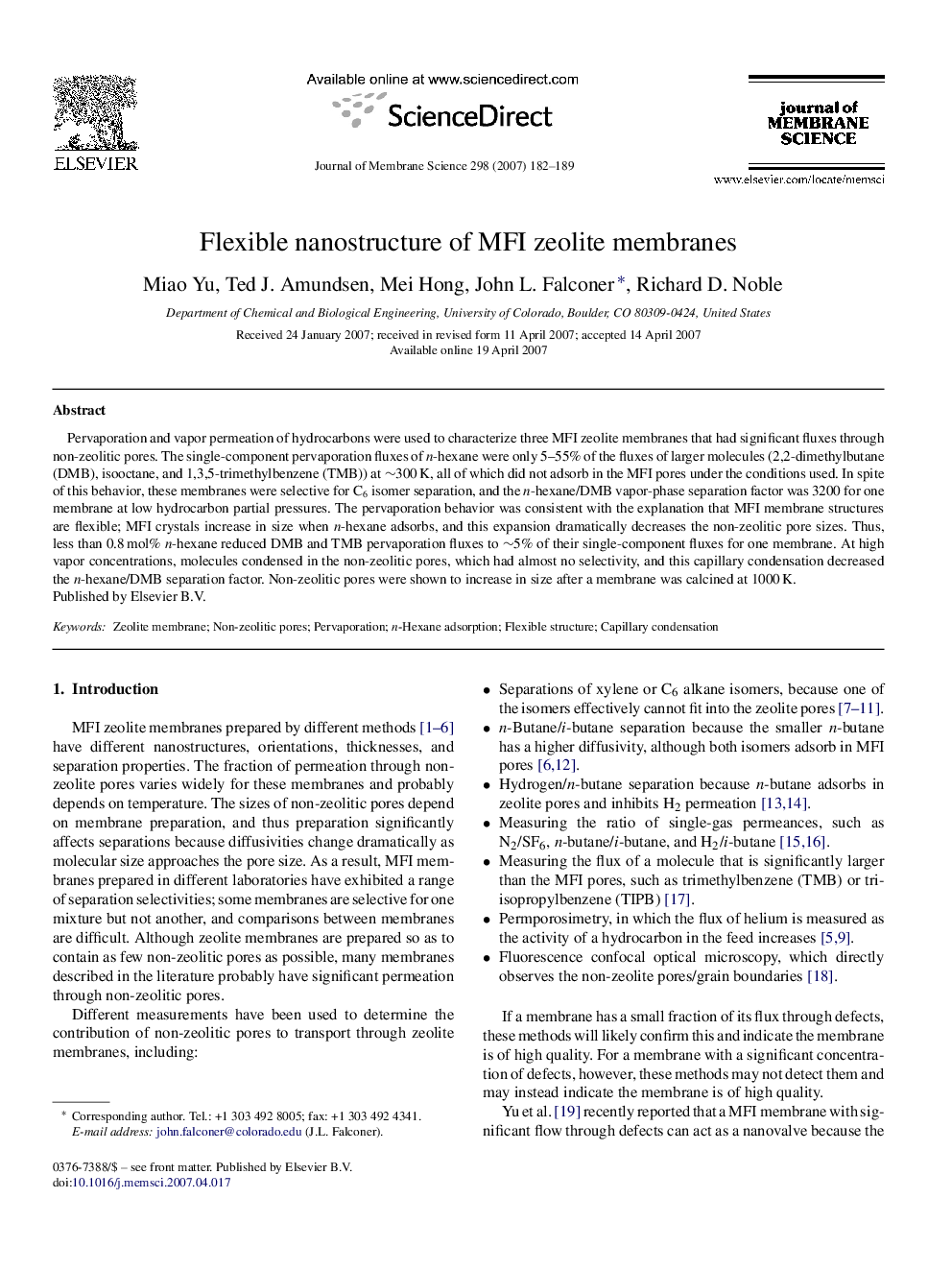| Article ID | Journal | Published Year | Pages | File Type |
|---|---|---|---|---|
| 638635 | Journal of Membrane Science | 2007 | 8 Pages |
Pervaporation and vapor permeation of hydrocarbons were used to characterize three MFI zeolite membranes that had significant fluxes through non-zeolitic pores. The single-component pervaporation fluxes of n-hexane were only 5–55% of the fluxes of larger molecules (2,2-dimethylbutane (DMB), isooctane, and 1,3,5-trimethylbenzene (TMB)) at ∼300 K, all of which did not adsorb in the MFI pores under the conditions used. In spite of this behavior, these membranes were selective for C6 isomer separation, and the n-hexane/DMB vapor-phase separation factor was 3200 for one membrane at low hydrocarbon partial pressures. The pervaporation behavior was consistent with the explanation that MFI membrane structures are flexible; MFI crystals increase in size when n-hexane adsorbs, and this expansion dramatically decreases the non-zeolitic pore sizes. Thus, less than 0.8 mol% n-hexane reduced DMB and TMB pervaporation fluxes to ∼5% of their single-component fluxes for one membrane. At high vapor concentrations, molecules condensed in the non-zeolitic pores, which had almost no selectivity, and this capillary condensation decreased the n-hexane/DMB separation factor. Non-zeolitic pores were shown to increase in size after a membrane was calcined at 1000 K.
